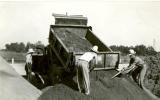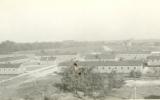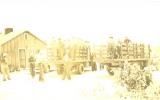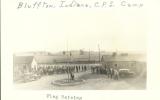CPS Unit Number 013-01
Camp: 13
Unit ID: 1
Operating agency: MCC
Opened: 6 1941
Closed: 3 1942
Workers
Total number of workers who worked in this camp: 149
-
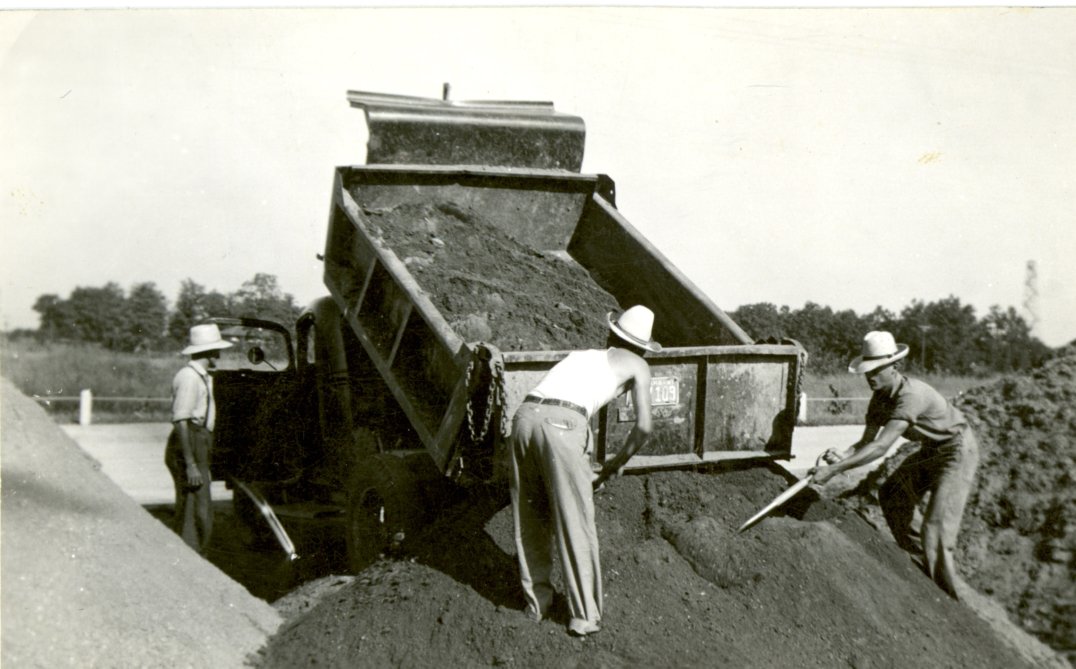 CPS Camp # 13, Bluffton, IndianaMuch sand is used in preparing the sand beds for the nursery.Box 1, Folder 11. MCC Photographs, Civilian Public Service, 1941-1947. IX-13-2.2. Mennonite Central Committee Photo Archive.
CPS Camp # 13, Bluffton, IndianaMuch sand is used in preparing the sand beds for the nursery.Box 1, Folder 11. MCC Photographs, Civilian Public Service, 1941-1947. IX-13-2.2. Mennonite Central Committee Photo Archive. -
 CPS Camp No. 13Camp 13, Bluffton, Indiana. Broadside view of the camp as seen from the east.Box 1, Folder 11. MCC Photographs, Civilian Public Service, 1941-1947. IX-13-2.2. Mennonite Central Committee Photo Archive
CPS Camp No. 13Camp 13, Bluffton, Indiana. Broadside view of the camp as seen from the east.Box 1, Folder 11. MCC Photographs, Civilian Public Service, 1941-1947. IX-13-2.2. Mennonite Central Committee Photo Archive -
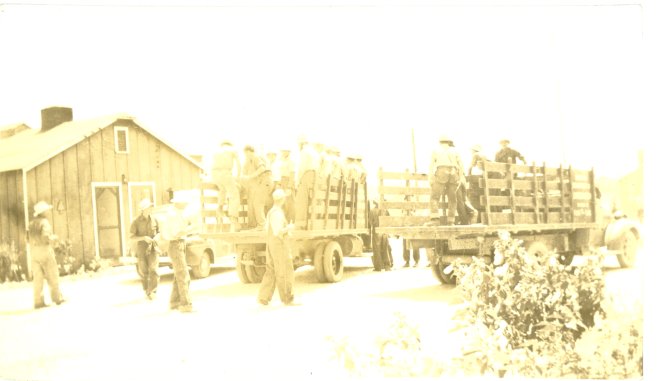 CPS Camp No. 13Camp 13, Bluffton, Indiana. All aboard for the project. The work day begins at 7:00.Box 1, Folder 11 MCC Photographs, Civilian Public Service, 1941-1947. IX-13-2.2. Mennonite Central Committee Photo Archive
CPS Camp No. 13Camp 13, Bluffton, Indiana. All aboard for the project. The work day begins at 7:00.Box 1, Folder 11 MCC Photographs, Civilian Public Service, 1941-1947. IX-13-2.2. Mennonite Central Committee Photo Archive -
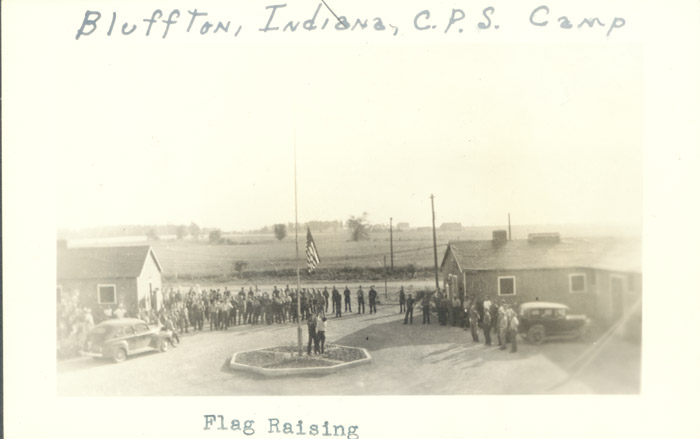 CPS Camp No. 13Civilian Public Service camp #13, Bluffton, Indiana, flag raising; postcardDigital image at Mennonite Church USA Archives, North Newton, Kansasca. 1942
CPS Camp No. 13Civilian Public Service camp #13, Bluffton, Indiana, flag raising; postcardDigital image at Mennonite Church USA Archives, North Newton, Kansasca. 1942
CPS Camp No. 13, a Forest Service base camp located east of Bluffton, Indiana operated by the Mennonite Central Committee opened in June 1941 and closed in March 1942. Part of the men worked in forestry activity and the rest worked with pheasants.
The camp facilities in an abandoned CCC camp required major renovation. On June 12, 1941, a few scattered buildings could be seen on the grounds overgrown with weeds, and they looked “smoky and gloomy”. “All of the water mains had been cut and some of the fixtures frozen. . .” Director Hartzler and Phil Frey worked with Camp Matron Alta Schrock and Dietician Edna Ramseyer to tackle the work. With the able assistance of Ohio and Indiana churches, they completed renovations and repairs in eleven days so that the camp was ready when one hundred-thirty-one men arrived on June 23.
Director: Raymond Hartzler
Dietician: Edna Byler, Myrtle Kolb, Edna Ramseyer
Matron: Alta Schrock, Mrs. Guy F. Hershberger
Typically, men in camps operated by The Mennonite Central Committee tended to report religious affiliation with predominantly Mennonite denominational groups when entering CPS. However, the camp at Bluffton included those of other faith persuasions.
The majority of men in Mennonite camps on entry into CPS reported their occupations as farming or other agricultural work. Men in Mennonite camps on average had completed 10.45 years of education. (Sibley and Jacob pp. 171-172)
Men worked in fish and game (raising pheasants) as well as in forestry. “The men gathered 400 bushels of walnuts for planting, built an artificial lake . . .artificial sprinkling system, and performed a variety of other tasks.” (Gingerich p. 127) When the camp was moved to Medaryville, Indiana in early April 1942 where fire prevention and control work awaited, a number of the men stayed to complete projects at Bluffton.
The Bluffton camp was the first MCC camp to publish its own paper, The Bluffton Peace Sentinel, which began on July 25, 1941.
MCC appointed J. N. Byler as it first camp educational director on August 16, 1941.
For more information on camp publications and formal education programs in Mennonite base camps see Melvin Gingerich, Service for Peace: A History of Mennonite Civilian Public Service. Akron, PA: Mennonite Central Committee printed by Herald Press, Scottdale, PA 1949, pp. 324-26, and Chapter XIX pp. 295-317.
For more information on women COs see Rachel Waltner Goossen, Women Against the Good War: Conscientious Objection and Gender on the American Home Front, 1941-47. Chapel Hill, NC: The University of North Carolina Press, 1997.
For general information on CPS camps see Albert N. Keim, The CPS Story: An Illustrated History of Civilian Public Service. Intercourse, PA: Good Books 1990.
See also Mulford Q. Sibley and Philip E. Jacob, Conscription of Conscience: The American State and the Conscientious Objector, 1940-1947. Ithaca, NY: Cornell University Press, 1952.
Swarthmore College Peace Collection, Camp periodicals database.
